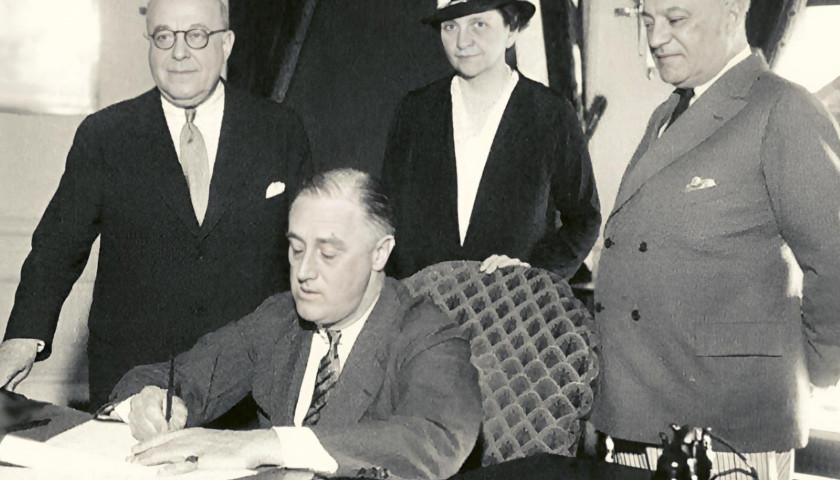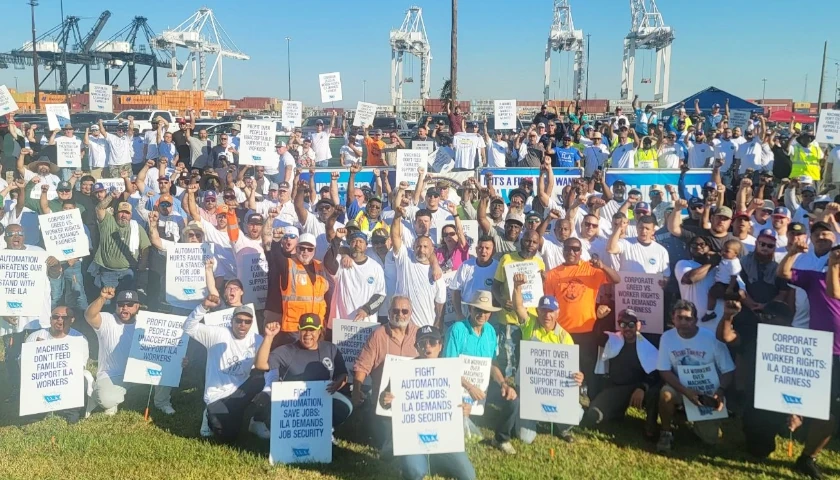by Russ Brown
Following the resolution of the six-week United Auto Workers strike last month and the ensuing glut of news coverage, one could be forgiven for believing that private sector unions were experiencing a generational comeback the likes of which haven’t been seen since their halcyon days of the 1950s.
The reality, however, couldn’t be further from the truth: union participation in the private sector is now a tiny sliver of the overall employment picture in the United States. According to the Bureau of Labor Statistics, the unionization rate of private-sector workers currently sits below 6 percent at just under 7 million workers nationwide – down from 17 million in 1950.
But that doesn’t mean that union power is all smoke and mirrors. Where one type of union is fading into obscurity, another is ascending: public-sector unions make up over 7 million workers and account for 33 percent of all public employees nationwide, according to the BLS.
The growth of public-sector unions is a worrying trend in the U.S. and could have harmful and long-lasting effects on people’s taxes, how our nation’s government operates, and the overall strength of our democratic process.
While the 1935 National Labor Relations Act in the mid-1930s provided for the right of private sector employees to unionize, engage in collective bargaining, and strike, it wasn’t until 1962 that federal workers gained the right to unionize. Throughout the rest of the decade, public sector unions proliferated at the federal, state, and local levels. Union membership began to climb – even as the private sector union landscape deteriorated.
There is a good reason why it wasn’t until the 1960s that public sector unions went unrecognized: They represent a perversion of the original justification for unionization.
For example, during collective bargaining in the private sector, all parties involved are incentivized to preserve the enterprise’s sustainability – and that generally keeps both sides in check. If the union demands too much, the company can become productive and unprofitable; if it goes out of business, the owners lose their company, and the employees lose their jobs.
Such a theoretical check, however, only exists in the private sector. In fact, collective bargaining between a government entity and its employees provides an abject case in moral hazard.
Consider a public sector union. If that union makes unreasonable requests, during negotiation, it is placing electoral – not business – risk on their employers, who are elected themselves or serve an elected official. In fact, some lawmakers may actually gain from advancing union requests by means of larger campaign contributions from the union. The public bears the very real financial and other risks as it must pick up the tab through higher taxes and a less efficient government.
In the private sector, if the union makes demands that result in a stifling of innovation, the company’s existence is threatened. In the public sector, citizens must accept the outcome: A less effective government and poorer public services.
Even the architect of the New Deal, President Franklin D. Roosevelt, warned of the dangers of public sector unions when he wrote in 1937 that “[a]ll Government employees should realize that the process of collective bargaining, as usually understood, cannot be transplanted into the public service.
FDR added: “The very nature and purposes of Government make it impossible for administrative officials to represent fully or to bind the employer in mutual discussions with Government employee organizations. The employer is the whole people …”
In his 2023 book, Not Accountable, lawyer and former presidential adviser Philip K. Howard went even further than FDR, arguing that public sector unions are unconstitutional.
In an interview with CIE, Howard said that “public unions do nothing but argue for inefficiencies because they get more jobs” to compensate for the lost efficiencies and that the relationship between public sector unions and governing bodies is “nothing but collusion.”
You don’t have to look far for examples of this collusion. Public sector unions like AFSCME spend heavily on campaign contributions, and some jurisdictions are even passing laws rolling out the red carpet for union interlopers.
The rise in power of public sector unions may be a boon for unions and elected officials, but it ultimately hurts the people both serve: the public. As FDR said when discussing a potential public sector union strike, “The paralysis of government by those who have sworn to support it is unthinkable and intolerable.” Unfortunately, such an outcome is no longer unthinkable, as it once was – but it should remain just as intolerable.
– – –
Russ Brown is president of the Center for Independent Employees, a nonprofit foundation that provides legal representation and aid to independent employees who are opposed to union oppression in their workplaces. He is also a consultant to The Heritage Foundation’s Project 2025.






Public service unions should have never been allowed to organize. They should be made illegal immediately.